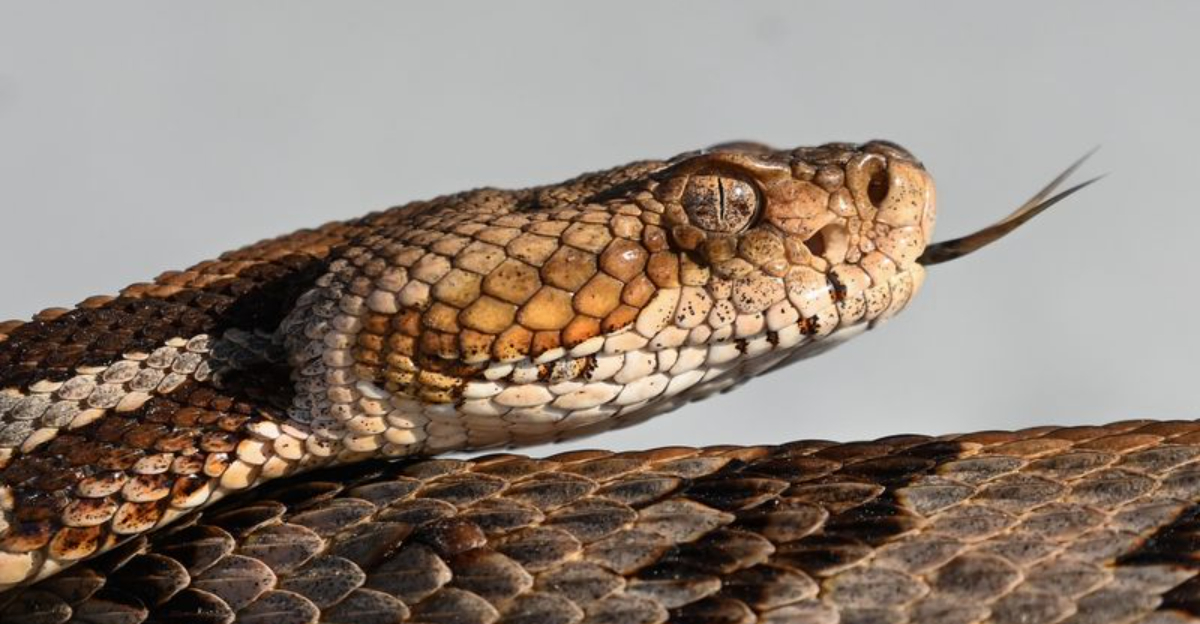Ever stumbled across a snake and wondered if it’s a friend or foe? Determining whether a snake is venomous can be crucial, especially for hikers, campers, and outdoor enthusiasts.
While not all snakes pose a threat, knowing the warning signs can help you stay safe. So, learn key indicators to quickly assess if a snake is venomous, blending knowledge with a touch of fun.
1. Head Shape
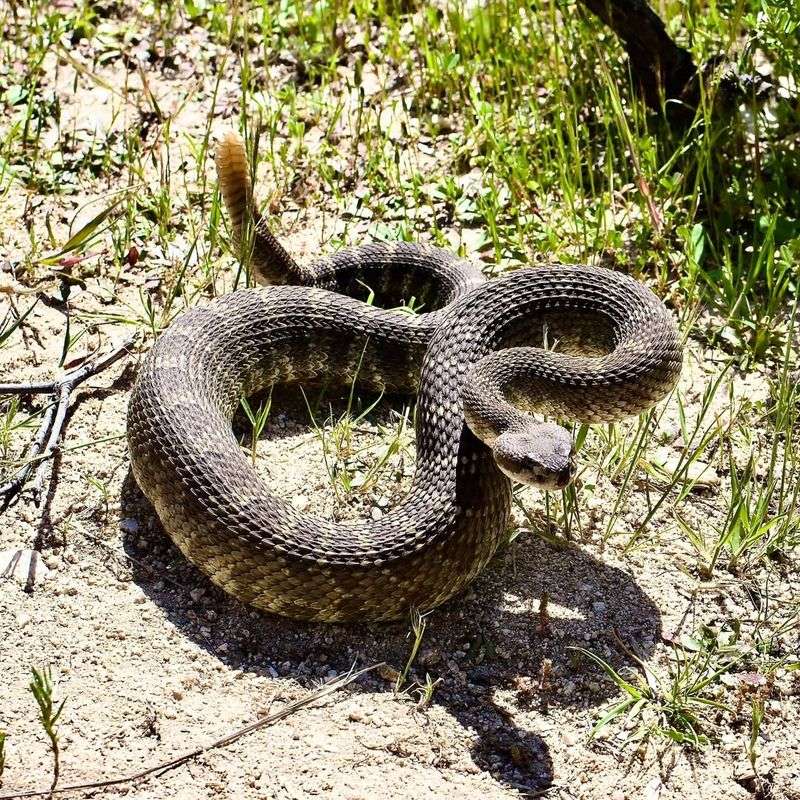
One of the quickest ways to determine if a snake is venomous is by observing its head shape. Venomous snakes often have a triangular or diamond-shaped head, a feature that houses their venom glands.
These glands are usually located behind their eyes, giving them a broad head. In contrast, non-venomous snakes tend to have a more slender, rounded head shape.
This triangular appearance can be a significant indicator, but it’s not foolproof, as some non-venomous snakes can flatten their heads to mimic this shape when threatened.
Knowing this, it’s crucial to consider other factors too. By observing head shape, you can quickly make an initial assessment but always proceed with caution.
Remember, nature is full of surprises, and while this trick can help, it shouldn’t be the only method you rely on.
It’s always best to keep a safe distance and avoid handling snakes unless you’re absolutely certain of their identity. When hiking or exploring, keep your eyes peeled for these subtle yet telling signs.
2. Pupil Shape
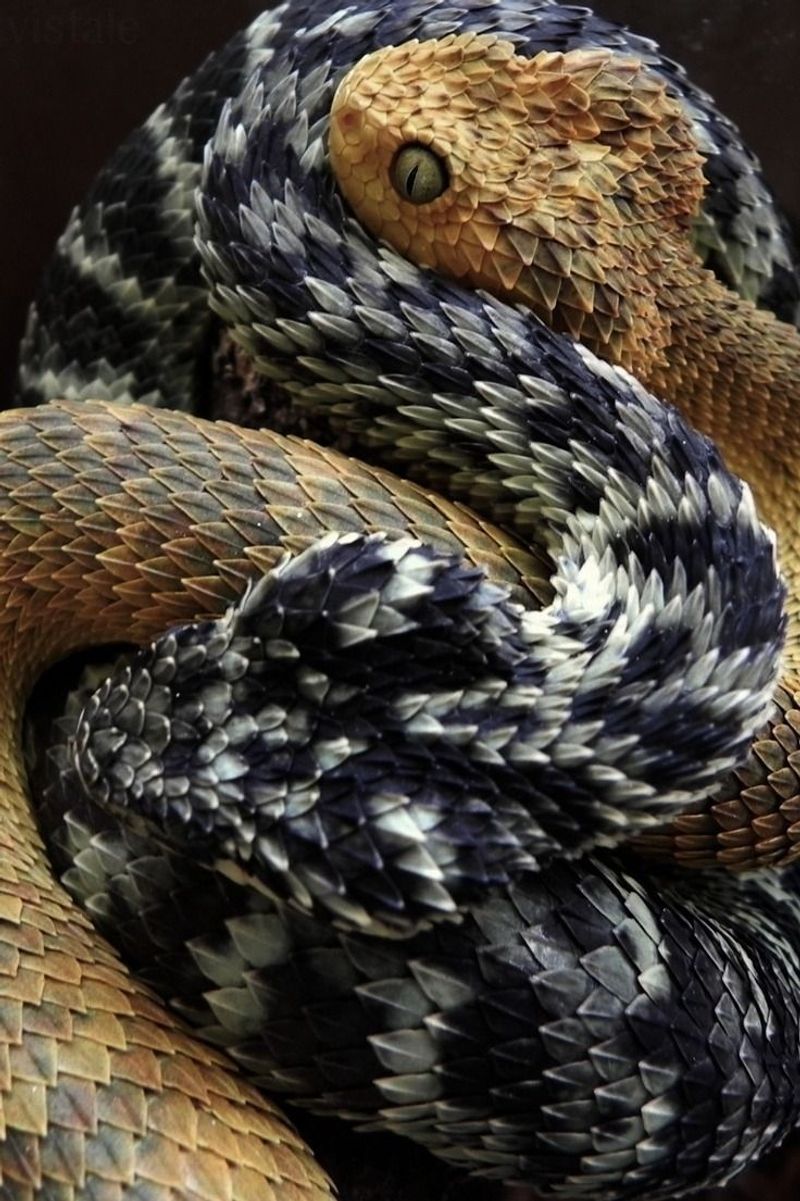
Eyes can be the window to a snake’s venomous nature. Venomous snakes, such as vipers and pit vipers, typically have elliptical, slit-like pupils, resembling those of a cat.
This adaptation aids them in hunting prey by allowing them to see well in low-light conditions. On the other hand, non-venomous snakes usually have round pupils, which are indicative of their daytime activity.
While this method is quite effective, it’s essential to remember that not all venomous snakes have slit pupils.
For example, coral snakes, which are highly venomous, have round pupils. Thus, combining this observation with other characteristics is key when identifying potential dangers.
Approach this method with a detective’s curiosity and an adventurer’s caution. Noticing these subtle differences can be exciting, but ensure you’re at a safe distance to observe without disturbing the snake.
Always remember that the goal is not to provoke but to protect yourself through knowledge and awareness!
3. Color Patterns
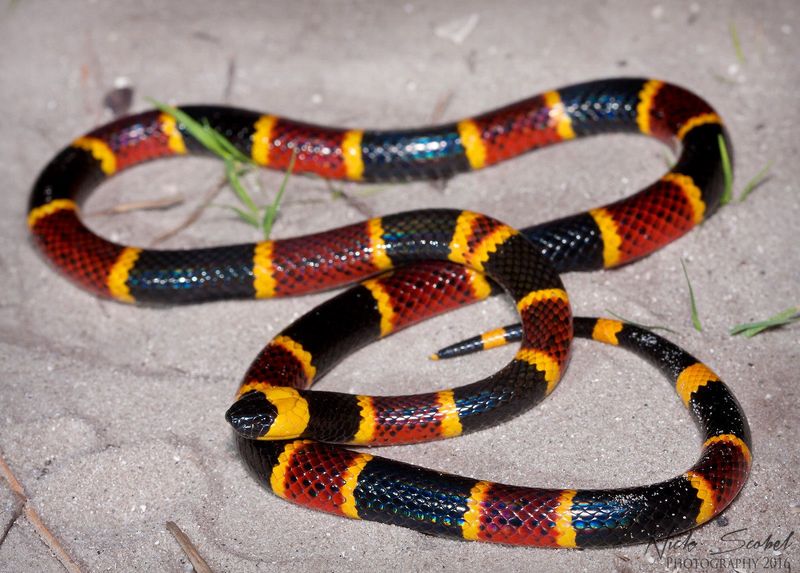
Color patterns can be a vibrant clue in determining a snake’s venomous nature. Some snakes, like the coral snake, sport bright, eye-catching colors such as red, yellow, and black bands.
However, mimicry is a survival tactic in nature. Non-venomous snakes, like the milk snake, have similar color patterns, which can confuse predators and humans alike.
It’s vital to recognize that while bright colors often signal danger, they are not a definitive indicator. Many non-venomous snakes display vivid colors to ward off predators.
For those who revel in the beauty of nature’s palette, this technique offers a fascinating glimpse into the art of deception in the wild.
Embrace this approach with a sense of wonder and caution, appreciating the splendor of these creatures while maintaining a respectful distance.
4. Heat-Sensing Pits
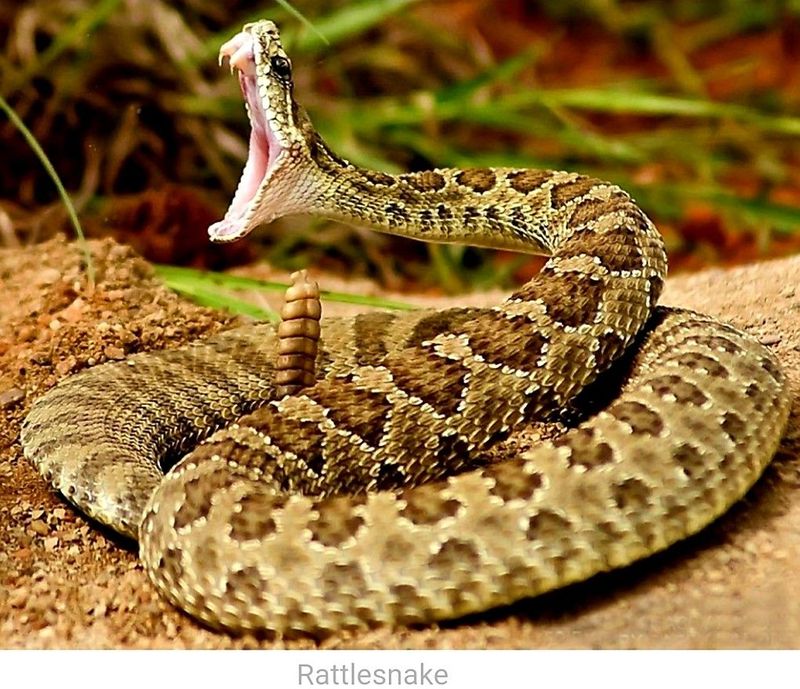
Among the intriguing adaptations of venomous snakes are heat-sensing pits, located between their eyes and nostrils.
These pits are particularly prevalent in pit vipers, such as rattlesnakes, and allow them to detect the infrared radiation emitted by warm-blooded prey.
This adaptation makes them efficient nocturnal hunters, able to track and target prey in complete darkness. Spotting these pits can help identify a venomous snake, but it requires keen observation.
The pits are small and subtle, demanding a close look, which should only be attempted from a safe distance or with the aid of binoculars. Non-venomous snakes lack these heat-sensing organs, so their absence can also be a helpful indicator.
Approach this method with the curiosity of an explorer and the caution of a seasoned adventurer. Observing these tiny yet telling features can provide insight into the fascinating world of snakes.
Appreciate the evolutionary marvels that equip these creatures for survival, while always maintaining a respectful and safe distance.
5. Behavioral Signs
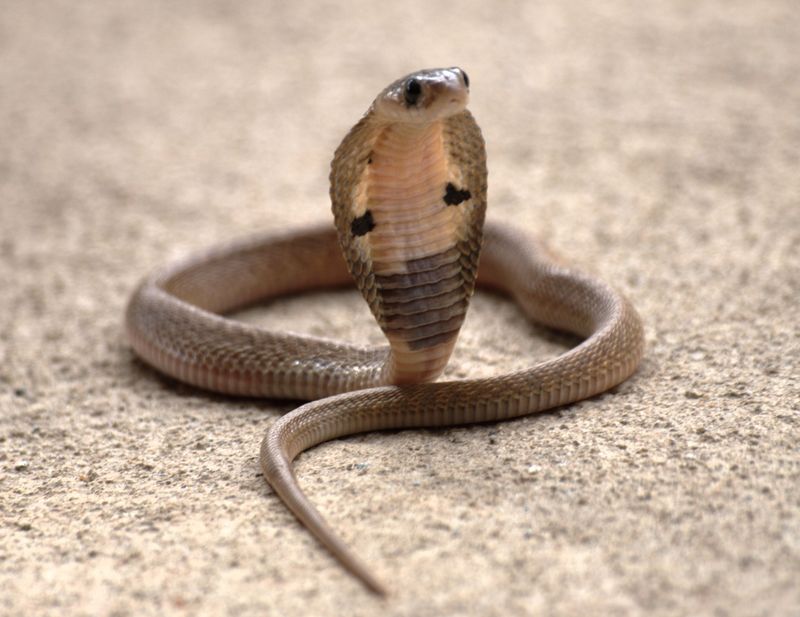
Behavioral clues are often the most immediate way to assess whether a snake is venomous. Venomous snakes tend to display aggressive or defensive behavior when threatened.
For instance, cobras are well-known for their hood-spread display, a clear warning to potential threats. Rattlesnakes, on the other hand, produce a distinctive rattling sound by shaking their tails.
These behaviors serve as warnings, signaling the snake’s potential danger to deter would-be predators. Non-venomous snakes might also mimic these behaviors, but typically, their attempts are less convincing. Observing a snake’s behavior can thus provide a critical clue to its nature.
Engage with this method by channeling your inner wildlife detective, piecing together actions and behaviors to form a clearer picture.
While thrilling, it’s essential to prioritize your safety by keeping a respectful distance. Recognizing these signs allows you to appreciate the intricate dance of survival that these creatures perform daily.
6. Scale Texture
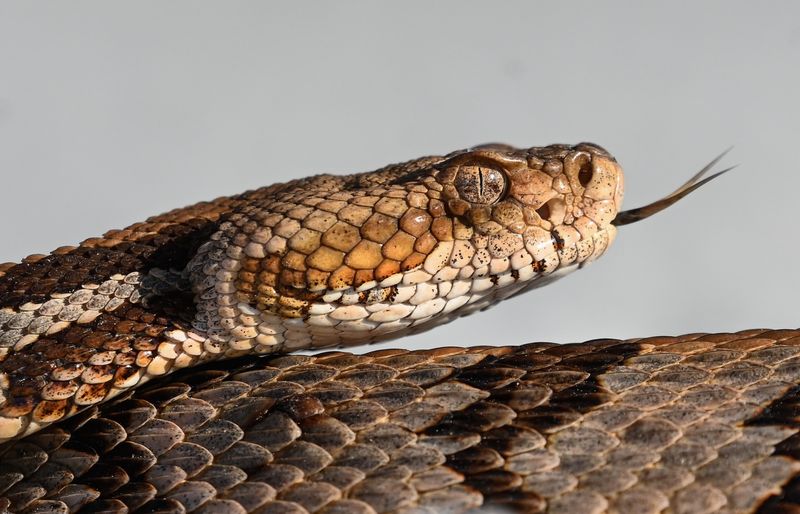
The texture of a snake’s scales can sometimes hint at its venomous nature. Venomous snakes, like rattlesnakes, often have keeled scales, which have a ridge down the center, giving them a rough texture.
In contrast, non-venomous snakes typically possess smooth, shiny scales that can feel almost glass-like to the touch.
While it’s not advisable to handle a snake to determine its texture, observing from a distance can reveal this characteristic. Light-reflecting off the scales or the way they catch in the environment can provide clues to their texture.
Approach this method with an artist’s eye, observing the play of light and shadow across the snake’s body. This technique offers a tactile glimpse into the snake’s identity without the need for direct contact.
Embrace this aspect of snake identification by combining visual cues with other signs for a fuller understanding, all while maintaining a safe and respectful distance.
7. Fang Marks
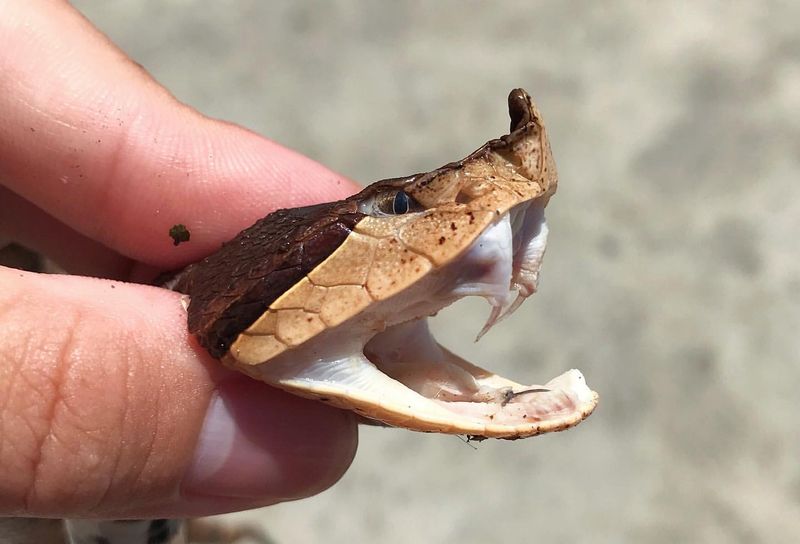
Fang marks are a telltale sign of a venomous snake encounter. These marks typically appear as two puncture wounds, spaced apart, corresponding to the snake’s fangs.
Venomous snakes have specialized hollow fangs to inject venom into their prey, a feature that sets them apart from non-venomous species that lack such structures.
Identifying fang marks can be crucial if you or someone else has been bitten, as it provides immediate insight into the potential severity of the bite. Non-venomous snake bites usually present as a row of tiny teeth marks, akin to a scratch.
Approach this aspect with the seriousness it warrants. Recognizing the difference between fang marks and non-venomous bites can be life-saving.
This knowledge empowers you to act swiftly and seek appropriate medical attention when necessary. Keep in mind that prevention is always preferable, so maintaining a safe distance from all snakes is the best practice.
8. Tail Shape
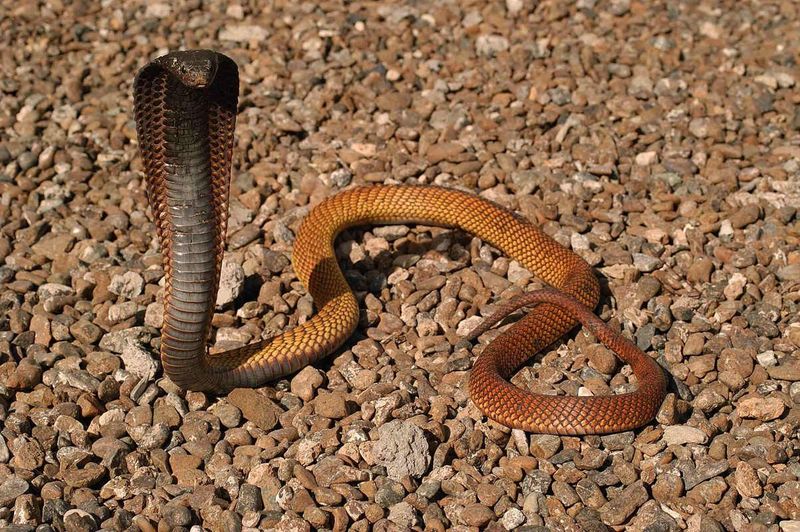
A snake’s tail can be a final, clear indicator of its venomous potential. Rattlesnakes, for example, have a distinctive rattle at the end of their tails, used to warn potential threats. This feature is unmistakable and serves as an audible as well as a visual cue to the snake’s identity.
While rattles are a clear indicator, not all venomous snakes possess such obvious features. However, the tail’s shape and behavior can still provide hints. For instance, many venomous species have a more tapered tail compared to non-venomous ones.
Engage with this method by observing the tail’s characteristics and behavior. This approach allows you to safely gather information from a distance, combining auditory and visual signals for a comprehensive understanding.
Remember, each observation adds another piece to the puzzle of identifying these fascinating yet potentially dangerous creatures. Always prioritize safety and respect for wildlife during your encounters.

